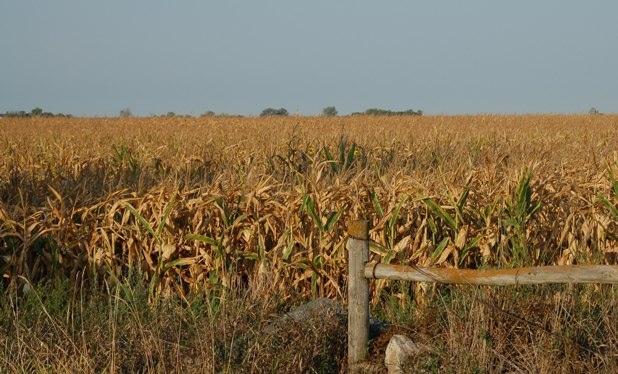Iowa State University Swine Extension Specialist Dave Stender doesn’t mince words when it comes to the next major obstacle facing the pork industry. “We have never had $7.50 corn going into a growing season with a general lack of subsoil moisture and no carryover corn supply.”

Iowa State University Swine Extension Specialist Dave Stender doesn’t mince words when it comes to the next major obstacle facing the pork industry. “We have never had $7.50 corn going into a growing season with a general lack of subsoil moisture and no carryover corn supply.”
That possibility raises some warning flags at a time when pork producers are struggling to recover from an uneven revenue year and one of the worst droughts in history.
If drought returns, corn prices likely skyrocket, putting some hog farmers in a downward spiral reminiscent of 2012.
What can producers do to insure they survive? Stender suggests considering the following steps:
Culling poor-producing females this winter while the sow cull market is high can improve sow herd efficiency, at a time when hog prices are still in the red. Fewer sows lowers production and throughput, but if drought returns on top of high grain prices, fewer marketings may prove to be a blessing, he points out, especially for next fall’s market.
Closing your herd to replacements for seven months can go a long way toward eliminating herd health challenges, such as porcine reproductive and respiratory syndrome and Mycoplasma pneumonia – two of the thorniest problems facing producers
Raising the weaning age from 17 to 22 days of age improves the quality of pig and lowers the cost per pig from a smaller sow base. Low fixed cost producers may be able to take advantage of the resulting lower feed cost per pound of weaned piglet. This change may potentially reduce mortality, culling and sort loss at marketing time.
Market hogs lighter if feed prices spike higher than the market price next summer. “Many producers figured this out last September that when you can’t cover feed costs, you sell lighter weight hogs to minimize loss,” he says. It is important to sort lighter weight pigs tighter to avoid sort loss. For more information, visit www.ipic.iastate.edu and listen to the recording by Dave Stender regarding market weight strategies.
“Global grain forecasters are suggesting we are living on the edge,” Stender says. “If we don’t get good weather, we don’t know how high is high when it comes to grain prices. We are in uncharted waters.”
About the Author(s)
You May Also Like





